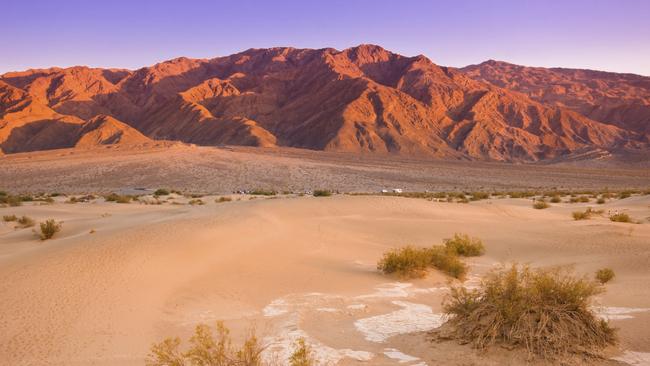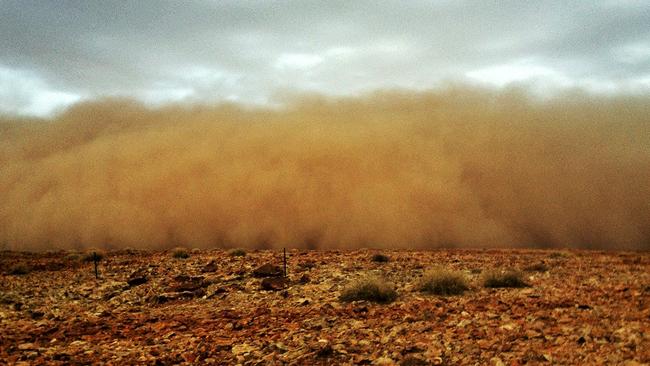54C sizzler makes Kuwait the hottest place on earth. Could we be next?
A HEATWAVE has seen a desert region of Kuwait hit 54C and become the hottest place on earth. Could it happen here??

THE Australian east coast might be shivering in the grip of a cold snap, but spare a thought for the region of Kuwait which remains gripped in a heatwave which last Thursday saw it likely become the hottest place on earth. Ever.
The mercury hit a blistering 54C at a remote weather station in Mitribah, a remote area of northwest Kuwait. It’s the highest temperature ever recorded in the eastern hemisphere, and may be the highest ever recorded on the planet.
If the temperature is verified by the World Meteorological Organisation, the area will take the title from California’s appropriately-named Furnace Creek in Death Valley.
That’s because many modern meteorologists are sceptical of that reading of 56.7C taken on July 10, 1913, because the measuring equipment used back then was not as reliable as modern methods.
Weather Underground meteorologist Christopher Burt broke the news of the Kuwait scorcher and said: “That record has been scrutinised perhaps more than any other in the United States. I don’t have much more to add to the debate aside from my belief it is most likely not a valid reading when one looks at all the evidence.”
In any case — at temperatures above 50C it’s too hot to debate anything at length, other than could Australia ever see such high temperature extremes.

Bureau of Meteorology climatologist Blair Trewin suspects we’ll be waiting a while for the prospect, and suspects higher altitudes in the hottest parts of Australia will keep us short of claiming a worldwide title.
Australia’s hottest reliably-measured day on record was a 50.7C scorcher recorded at the tiny town of Oodnadatta in South Australia on January 2, 1960, Mr Trewin said.
Passing the half-century means Oodnadatta can rightly lay claim to the sign outside the town which proclaims it as ‘the driest town, the driest state, of the driest continent’.
Mr Trewin said temperatures hitting 54C in Australia would “definitely be stretching it”.
“Even if you factor in the fact that temperatures have risen by 0.7 or 0.8 of a degree since 1960, that’s still quite along way from 54,” he said.
“The other thing that makes Australia a little bit different from where this temperature was recorded in Kuwait is that the places in Australia which are the hottest are also places which are reasonably high altitude,” he said.
Oodnadatta, for example is 120m above sea level, while Kuwait is about 47m.
“Pretty well most of the interior of Western Australia, northwest South Australia and the southern Northern Territory is at an elevation of somewhere between 300m and 600m above sea level,” Mr Trewin said.

“In mostly dry conditions temperatures will decrease at an average of about one degree per 100m.
“In the heatwave we had in January in 2013 it reached 48 degrees at Wiluna in central Western Australia (on the edge of the Western Desert).
“Wiluna is about 500m above sea level, so 46C at that elevation translates to about 53C at sea level — but of course there’s no land at anywhere near sea level in that region.”
The last time Australia reached above a half-century for high temperatures was February 19, 1998, when the mercury hit 50.5C at Mardie on the Pilbara Coast in WA. That remains the hottest day ever recorded in WA.
“We have had quite a few near-misses on 50C in recent years — a 49.6C in January 2013 at Moomba in South Australia, was the closest, and we had 49.1C at Walgett in NSW in 2014,” said Mt Trewit.

But it will get hotter as the century progresses.
“Over the past century as a whole in Australia temperatures have risen about a degree, and there has been fairly consistent warming since 1950,” Mr Trewin said.
“Certainly projections are we will see continued warming at about that rate, and with higher temperatures you have potential for extreme high temperatures of various kinds.
“The long-term trend when we compare how often we are getting warm extremes to how often we get cold extremes is, is that in Australia record high temperatures are outnumbering record low temperatures at a ratio of somewhere between three and five to one.”
Will we reach the melting heights of 54C? Not in the near future, says Mr Trewin.
“But some of the higher range projections for climate change do indicate the possibility of warming by three degrees or more in the second half of the century. A lot depends what happens to greenhouse glasses over the last half of the century,” he said.
Meanwhile, Australia has set a heat record of its own this week.
On Sunday the highest ever July temperature ever recorded in Australia — 38.3C — was recorded at Kalumburu on the northern tip of the Kimberley in WA.




